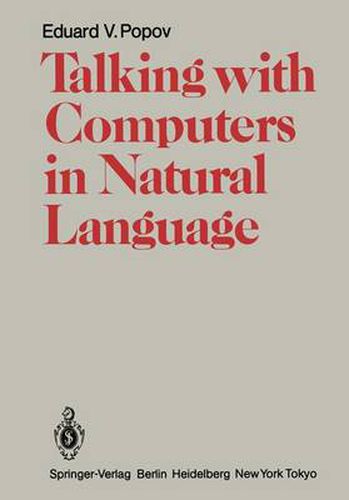Readings Newsletter
Become a Readings Member to make your shopping experience even easier.
Sign in or sign up for free!
You’re not far away from qualifying for FREE standard shipping within Australia
You’ve qualified for FREE standard shipping within Australia
The cart is loading…






This title is printed to order. This book may have been self-published. If so, we cannot guarantee the quality of the content. In the main most books will have gone through the editing process however some may not. We therefore suggest that you be aware of this before ordering this book. If in doubt check either the author or publisher’s details as we are unable to accept any returns unless they are faulty. Please contact us if you have any questions.
The growing efficiency and lower prices of computers make it possible to apply them more widely in the economy. However, the wide use of computers in every day life is hindered by a number of factors which constitute what we shall call the problem of contact or of talking . The difficulty is that languages used by computers differ substantially from users’ languages and are not understood by specialists who are unfamiliar with programming. This is why those specialists who use computers need the help of programmers to communicate. Since this form of communication has many more or less obvious shortcomings, great efforts have been made to find a solution to the problem of contact. Two ap proaches can be distinguished here: (1) making the computer language similar to the natural language; (2) making the user’s language resemble that of computers through formalizing the former. This book deals with the first approach. We shall consider those systems which make it possible to talk with the user in limited natural language (LNL). The term natural language (NL) has been used in the title of this book instead of LNL. The reason for not using the term limited natural language is that this term has two meanings: (1) a dialect of a natural language; (2) a formal language whose operators are expressed by words taken from a natural language (e. g.
$9.00 standard shipping within Australia
FREE standard shipping within Australia for orders over $100.00
Express & International shipping calculated at checkout
This title is printed to order. This book may have been self-published. If so, we cannot guarantee the quality of the content. In the main most books will have gone through the editing process however some may not. We therefore suggest that you be aware of this before ordering this book. If in doubt check either the author or publisher’s details as we are unable to accept any returns unless they are faulty. Please contact us if you have any questions.
The growing efficiency and lower prices of computers make it possible to apply them more widely in the economy. However, the wide use of computers in every day life is hindered by a number of factors which constitute what we shall call the problem of contact or of talking . The difficulty is that languages used by computers differ substantially from users’ languages and are not understood by specialists who are unfamiliar with programming. This is why those specialists who use computers need the help of programmers to communicate. Since this form of communication has many more or less obvious shortcomings, great efforts have been made to find a solution to the problem of contact. Two ap proaches can be distinguished here: (1) making the computer language similar to the natural language; (2) making the user’s language resemble that of computers through formalizing the former. This book deals with the first approach. We shall consider those systems which make it possible to talk with the user in limited natural language (LNL). The term natural language (NL) has been used in the title of this book instead of LNL. The reason for not using the term limited natural language is that this term has two meanings: (1) a dialect of a natural language; (2) a formal language whose operators are expressed by words taken from a natural language (e. g.